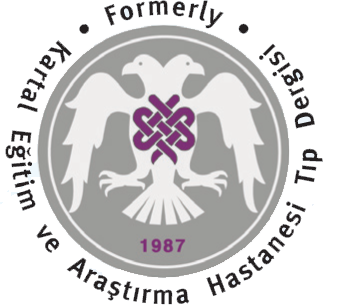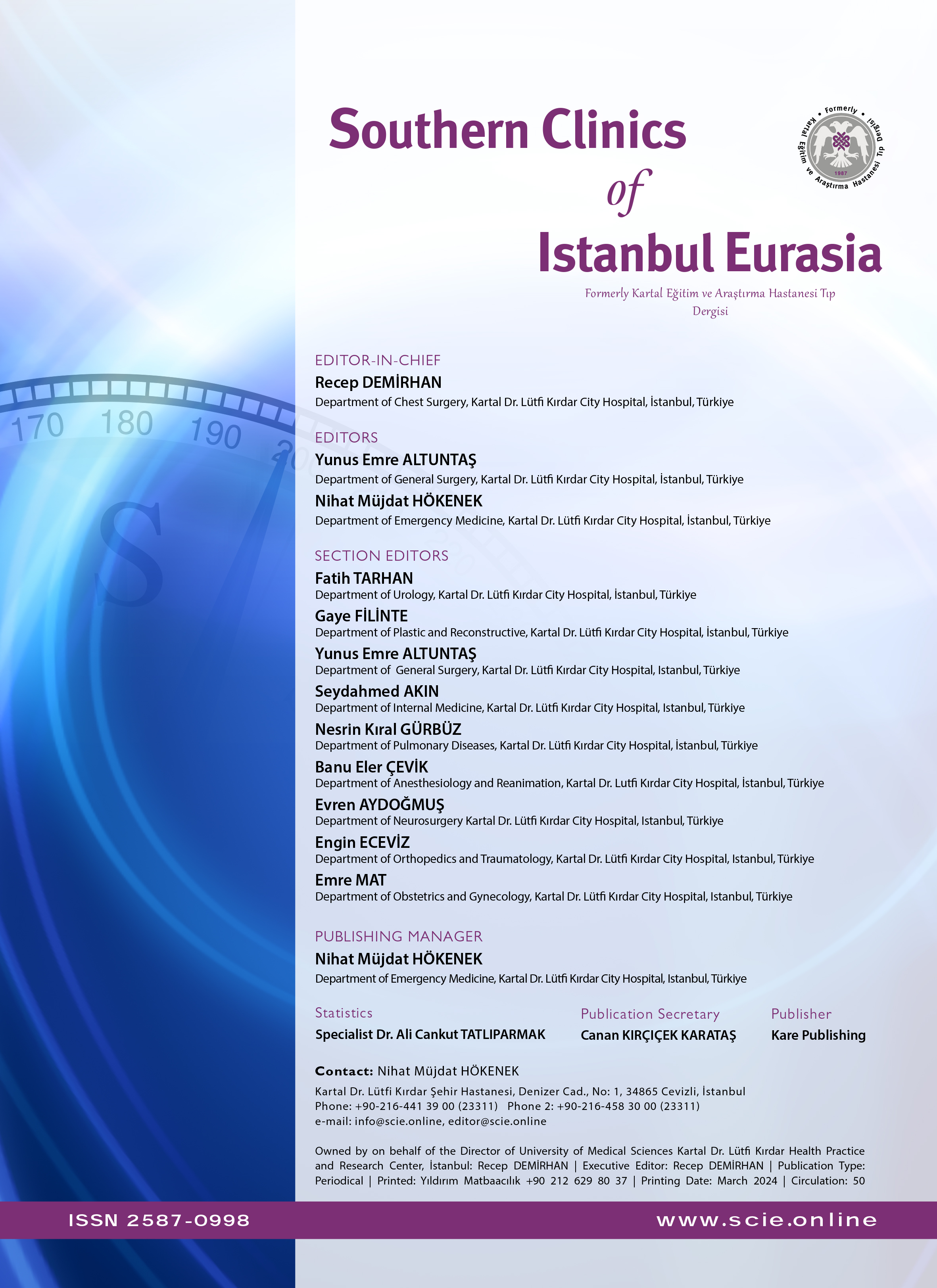Evaluation of our results with proximal femoral nail and sliding hip screw methods in the management of geriatric intertrochanteric hip fractures
Ufuk Özkaya, Murat Gül, Atilla Sancar Parmaksızoğlu, Seçkin Basılgan, Yavuz KabukçuoğluTaksim Training and Research Hospital, Department of Orthopedics and Traumatology, Istanbul, TurkeyOBJECTIVE: The results of two different methods used in our clinic in the treatment of proximal femoral geriatric fractures were compared and prognostic factors were determined.
METHODS: During 2001-2006, patients over 70 years old treated with either dynamic hip screw (Group I, n=46; 18 males, 28 females; mean age 80.1; range 70 to 95 years) or proximal femoral nail (Group II, n=33; 12 males, 21 females; mean age 78.8; range 70 to 92 years) for pertrochanteric fractures were retrospectively evaluated. AO/OTA classification system was used.
RESULTS: The mean follow-up period was 43.5 months (14-71) for Group I and 23 months (18-31) for Group II. Reoperation was necessary in 3 (6.5%) patients in Group I and in 2 (6%) patients in Group II. Mortality rate in the first postoperative year was 13% (n=6) in Group I and 6% (n=2) in Group II. Parker-Palmer mobility scores in Group I and in Group II at the last assessment were 5 (3-9) and 6.5 (4-9), respectively. No statistical difference was noted between the two treatment methods with respect to Singh index scores, collodiaphyseal angles and tip-apex measurements with the Mann-Whitney U test. Retroscopic evaluation of the poor results of both methods proved that unsatisfactory surgical technique resulted in implant failures.
CONCLUSION: Our conclusion is that the question to be asked is not which implant?, but how good is the surgical technique?.
Geriatrik intertrokanterik kırıkların tedavisinde proksimal femoral çivi ve dinamik kayıcı kalça çivisi teknikleri ile elde edilen sonuçların değerlendirilmesi
Ufuk Özkaya, Murat Gül, Atilla Sancar Parmaksızoğlu, Seçkin Basılgan, Yavuz KabukçuoğluTaksim Eğitim ve Araştırma Hastanesi, Ortopedi ve Travmatoloji Kliniği, İstanbulAMAÇ: Proksimal femoral ekstrakapsüler geriatrik kırıkların tedavisinde kliniğimizde kullanılan iki değişik yöntemle elde edilen sonuçlar karşılaştırılarak prognoza etkili faktörler belirlendi.
YÖNTEMLER: 2001-2006 yılları arasında 70 yaş üzeri pertrokanterik kırık nedeniyle dinamik kayıcı kalça çivisi (Grup I, n=46; 18 erkek, 28 kadın; ort. yaş 80,1; dağılım 70-95) ve proksimal femur çivisi ile tedavi edilen hastalar (Grup II, n=33; 12 erkek, 21 kadın; ort. yaş 78,8; dağılım 70-92) geriye dönük olarak değerlendirildi. Kırık sınıflamasında AO/OTA sınıflaması kullanıldı.
BULGULAR: Ortalama takip süreleri Grup Ide 43,5 ay (dağılım 14-71), Grup IIde 23 aydı (dağılım 18-31). Ameliyat sonrası erken dönemde ve son kontrollerde çekilen grafilerde kollodiafizer açı ölçüldü. Reoperasyon oranı Grup Ide 3 hasta (%6,5) Grup IIde 2 hasta (%6); bir yıl içinde mortalite Grup Ide 6 hasta (%13), Grup IIde 2 hastaydı (%6). Parker-Palmer mobilite skoru son kontrolde Grup Ide 5 (dağılım 3-9), Grup IIde 6,5 (dağılım 4-9) bulundu. Mann-Whitney U testi ile, Singh indeksi, kollodiyafizer açı ve uç-tepe mesafesi ölçümlerinde iki grup arasında anlamlı fark bulunmadı. İki gruptaki kötü sonuçlu olguların geriye dönük incelemesinde, tekniğe uygun ameliyat yapılmadığı için yetmezliklerin geliştiği gözlemlendi.
SONUÇ: Kendi tecrübemizden elde ettiğimiz çıkarım, asıl önemli sorunun implant seçimi değil, seçilen implantın uygun cerrahi teknikle yapılıp yapılmadığıdır.
Corresponding Author: Yavuz Kabukçuoğlu, Türkiye
Manuscript Language: Turkish



















